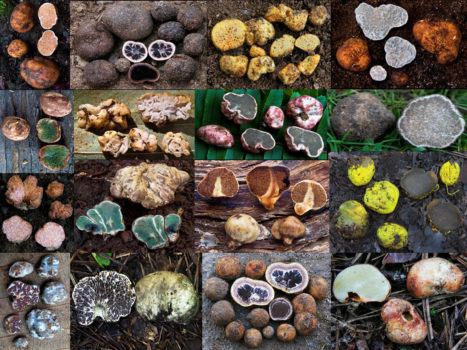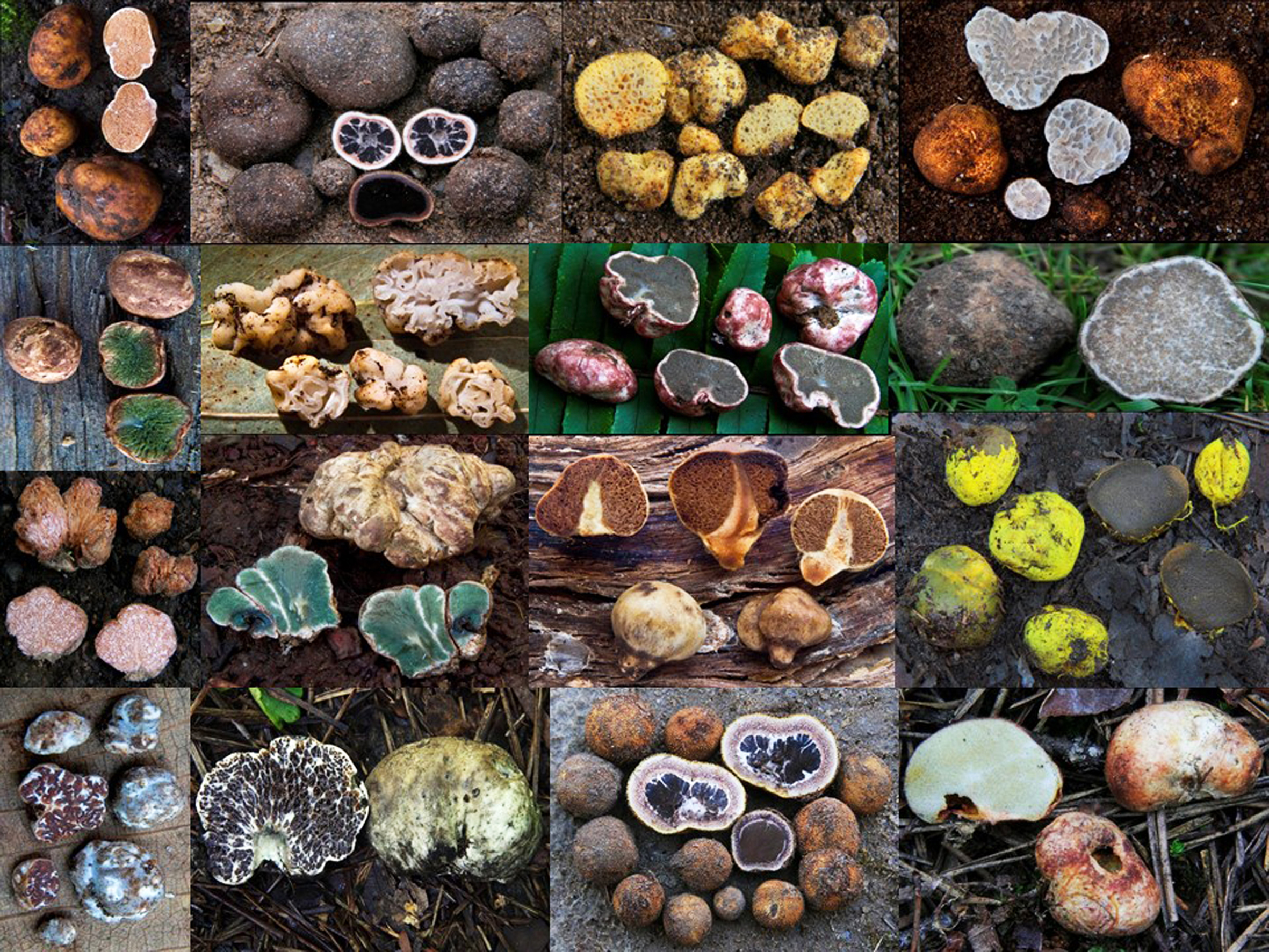 The term “truffle” may evoke thoughts of exquisite chocolates or five-star restaurants, but among ecologists it refers to a diversity of fungi found growing under leaf litter. Some Australians have begun cultivating the European black Perigord truffle (Tuber melanosporum) that has become exceedingly popular in gourmet cuisine, but often overlooked is the myriad of fascinating truffles native to Australia. Though these hundreds of endemic species may never find their way to a dinner plate, they happen to be vital to the health and adaptability of the Australian ecosystem—particularly in the face of a changing climate.
The term “truffle” may evoke thoughts of exquisite chocolates or five-star restaurants, but among ecologists it refers to a diversity of fungi found growing under leaf litter. Some Australians have begun cultivating the European black Perigord truffle (Tuber melanosporum) that has become exceedingly popular in gourmet cuisine, but often overlooked is the myriad of fascinating truffles native to Australia. Though these hundreds of endemic species may never find their way to a dinner plate, they happen to be vital to the health and adaptability of the Australian ecosystem—particularly in the face of a changing climate.
Many truffles form symbiotic associations (formally called “mycorrhizae”) with the roots of Eucalyptus, southern beech (Nothofagus spp.), and other trees. Truffles absorb water and minerals, which they transfer to plants through their roots. In return, plants provide sugar for the fungi. Both groups of organisms depend on one another, as do many other components of the ecosystem.
Truffles fruit underground or beneath leaf litter, making them well-adapted to dry environments. And though an underground fruiting habit is disadvantageous to spore dispersal and thus reproductive success, truffles adapt by releasing aromas (when ripe) that are pleasing to native mammals. Small marsupials and rodents consume fungi for a large percentage of their diets, and spores are dispersed widely through scats as these animals move through their habitats.
In foraging for these fungi, animals leave behind hundreds of digs per week and turn over a tremendous tonnage of soil each year across Australia. This excavation provides a vital ecosystem function for the continent, as these mammals break up soil that would otherwise become saturated with Eucalyptus oil and impenetrable to water. Furthermore, spores dispersed through scats improve fungal diversity, and this translates into more accessible nutrients and water for forest health.
Unfortunately, this interwoven ecological web has disintegrated rapidly in recent years. Australia’s small mammal diversity has plummeted with the introduction of foxes and cats. Without small mammals digging for truffles, Eucalyptus oils build up and water runs off, soil erodes, leaf litter can’t sufficiently cycle back into the soil, and fires burn hotter than they did historically. Compacted soil makes it difficult for vital mycorrhizal connections to cycle nutrients and water, and trees die back as forest health declines. This loss of associations between small mammals, truffles, trees, and soil health is among the gravest environmental concerns hindering Australia’s adaptation to a changing climate.
By Kelsey Elliott and Todd F. Elliott, Ecologists
